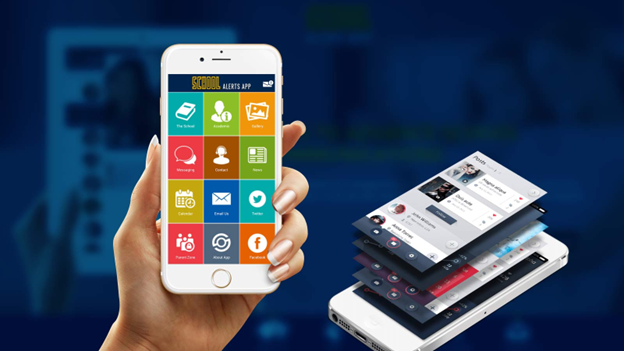Inclusive design is not merely an afterthought; it is a fundamental approach that seeks to create products, services, and environments that are accessible and usable by everyone, regardless of their circumstances. It aims to remove barriers that hinder individuals from fully engaging with a product. This means considering factors such as physical disabilities, cognitive differences, sensory impairments, and even cultural backgrounds.
If you are an individual developer or an experienced app design services firm eager to learn about inclusive design, why it is crucial for your product, and its key principles, this article is for you. Let’s face it.
So, What Exactly is Inclusive Design?
Inclusive design is a mindset that strives to build digital products accessible to as many people as possible, regardless of their age, ability, or background. It seeks to comprehend and closely adapt to the diverse needs of all users. The goal? To ensure that the product works well and is amusing to all, no matter who they are or their circumstances.
Inclusive Design Principles
- Recognizing Exclusion: It happens when we start overlooking individuals’ diverse needs, such as designing only for tech-savvy users or people that could others out. So try not to create gaps and work close to fill them, if any.
- Solve for One, Extend to Many: A nicely prepared design solves any specific issue while expanding its benefit to others.
- Flexibility is Key: Some people might expect your product to answer them in voice commands, while others prefer typing. With Inclusive design, you can allow them to interact with your product in the best way for them.
- Consistency and Simplicity: For an inclusive design, it is necessary to aim for a simple and basic that looks like an easy go-to choice for everyone. People of all skill levels will enjoy it using without confusion or frustration.
Why Your Product Needs Inclusive Design
If your product design seems complicated and is not prepared with an inclusive mindset, it might have lost you thousands of potential users and businesses. These are just a few reasons that can hold you back. Let’s discuss other reasons that make it paramount to have an inclusive product design:
Better Experience for All Users
The beauty of the inclusive design is that it doesn’t target selected individuals only; whatever changes are made will perk all those parts of it. Let’s suppose you have added different features like adjustable text size, voice commands, or high-contrast modes to your mobile app for differently abled users. But it can also be helpful for common people.
Build Brand Loyalty
Consumers will undoubtedly prove their brand loyalty to businesses that care about accessibility and inclusivity. You simply send users a message of care and priority that you prefer their comfort over all other things. This makes your work look interesting to them; as a result, you get massive loyalty and a better reputation.
Reach a Bigger Audience
When your product is simple and comfortable, it impacts a large number of people who use it, regardless of being tech savvy. This nature expands your user base as out of 1 in 6 people worldwide hold some kind of disability, and countless others face temporary or situational challenges.
Stay Legally Compliant
In many states globally, it is now requisite for businesses to ensure that their design meets accessible standards for all. Likewise, in the USA, the Americans with Disabilities Act or the Web Content Accessibility Guidelines are specifically regulated organizations that keep a product launched in the market in check and adhere to regulations. So, it would be better to avoid penalties and potential legal problems that could waste your resources and valuable time.
Foster Innovation
With an inclusive mindset, people often bring creative ideas and solutions that might never have been thought of before. They think outside the box to take care of users’ needs and design specific elements that make their products stand out.
How to Start with Inclusive Design
Bringing inclusive design into your product development process doesn’t have to be complicated. For those who provide app design services, we have shared proven steps to get started with it.
1. Engage Diverse Users Early
One of the paramount yet often missed aspects of having an inclusive design is the involvement of the diverse user since the beginning of app design services. It involves collecting feedback from people with different abilities, backgrounds, and environments.
Diverse feedback is priceless. It helps you catch issues that could be easily overlooked if your testing pool only includes a narrow segment of users.
2. Follow Accessibility Guidelines
It is necessary to pen down all your accessibility guidelines with adherence to standards like Web Content Accessibility Guidelines and the Americans with Disabilities Act. It will ensure that you take clear and actionable steps to let your digital product meet basic accessibility requirements.
Keep in mind that these guidelines are a starting point, not the finish line. They just lay out the basics of accessibility to make it further enhanced hund for highly creative solutions to serve this purpose.
3. Educate Your Team
To get success in your inclusive design, you have to go the extra mile to keep everyone engaged and understand its importance. You can start with training sessions focused on the principles of inclusive design and accessibility. These workshops can teach members about the tools and resources available to execute relevant features, such as design libraries, color contrast analyzers, or voice interface guidelines.
Also, encourage your team to take it as a positive challenge rather than just a box to check. This creative and competitive environment will empower them to bring results that birth unique and thoughtful designs.
4. Keep Iterating
User needs and preferences keep changing with the passage of time, so it would be wrong to assume that including design is a one-time effort. It is an unending roadmap where you are supposed to make changes as your product grows quickly. Different factors can influence change over time, such as accessibility, technological advances, and, most importantly, change in user minds.
To keep pace with all these factors, you shall conduct a ritual design test for diverse users, even after launch. The habit of users getting user feedback will help you drive any future updates and keep your product inclusive and relevant.
Wrapping Up
Inclusive design is not simply a short term trend; it’s the future of app design services. Those who embrace inclusivity in their designs can open a large window of users and enhance the overall quality of products. It implies their reputation for respecting user choices and positioning them as a true brand that truly values diversity and inclusivity.
So what are you waiting for? Start your own inclusive design and watch your product resonate with more users than ever before.
Read More: Key Steps for Designing User-Friendly Android Apps



